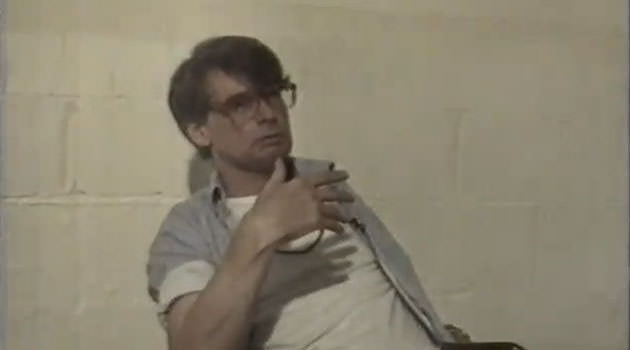 Even after well over a century the legend of Jack The Ripper refuses to die. The serial killers that came much after him have made The Ripper pale in comparison on account of sheer magnitude and monstrosity of their crimes. With just five prostitutes as victims The Ripper is nowhere close to the likes of Ted Bundy, Andrew Nilsen and Albert Fish either in the way they killed or what they did with the bodies. But he still remains alive in public memory with books written and movies made on him, one of the recent movies being From Hell (2001), starring celebrated actor Johnny Depp (No, he didn’t play The Ripper).
Even after well over a century the legend of Jack The Ripper refuses to die. The serial killers that came much after him have made The Ripper pale in comparison on account of sheer magnitude and monstrosity of their crimes. With just five prostitutes as victims The Ripper is nowhere close to the likes of Ted Bundy, Andrew Nilsen and Albert Fish either in the way they killed or what they did with the bodies. But he still remains alive in public memory with books written and movies made on him, one of the recent movies being From Hell (2001), starring celebrated actor Johnny Depp (No, he didn’t play The Ripper).
On August 31, 1888, it was the predawn hours when one Charles Cross came across the dead body of a woman lying on her back in Whitechapel’s Buck’s Row. It was still dark and rather cold. Cross could not correctly judge the kind of injuries the woman had sustained. The woman had her skirt lifted almost to her waist. He and another passerby decided to find a policeman. While they were gone Constable Neil found the body. The light of his lantern was sufficient for him to see the woman’s bleeding throat. Her throat had a deep gash stretching from this side of the neck to the other. Neil called another policeman, who called a doctor.
Dr. Rees Llewellyn, who arrived at the scene shortly after, found a deep cut on the throat that had cut through her windpipe and the esophagus. The wound had been fatal. The body was still warm, which indicated that the woman had not been dead for longer than half an hour or so. Her neck had been slashed twice and she had been killed where she had been found. The body was taken to the mortuary located at Old Montague Street. And when her clothes were being removed Inspector Spratling found that the woman’s stomach had been badly mutilated. Doctor Llewellyn was called again, who found that there were some bruises on the woman’s lower left jaw and, according to him, the wounds such as those on the woman could be inflicted by a left handed person, very swiftly with a long jagged knife. However, the doctor later felt that the killer might not essentially be left-handed.
The woman was not instantly recognized, but was later found to be one Mary Ann Nichols (42). She was identified by her husband and father. Her marriage had broken up on account of her drinking, she had five children and had been living on whatever little she earned as a prostitute. Her murder had left no clues behind – no witnesses, no murder weapon and nobody who had seen anybody exiting from the scene in a hurry.
There had been many attacks on prostitutes in the area. However, it is difficult to connect those with the murderer who later came to be referred to as ‘Jack the Ripper’.
Frederick George Abberline was given the charge of the investigation. He had been on the force for 25 years and had mostly worked in the Whitechapel area. Johnny Depp plays Abberline in From Hell , but the character has been portrayed as a young inspector in the movie, while in fact Abberline was a veteran policeman.
Those were the times when killing had a very clear motive, often money. Serial killers who killed at random were unheard of in Victorian England. However, assaults on the prostitutes were not all that uncommon.
Annie Chapman, known to her friends as ‘Dark Annie’ is considered Ripper’s second victim. Her life was nothing short of miserable. She was a 47-year-old homeless prostitute, who lived at common lodging houses whenever she could earn enough to pay for her bedding, and when she could not, she would roam the streets looking for clients.
On September 8, 1888, when Annie was slightly drunk, she was turned out of her lodging house at around two in the morning because she could not pay for her bed. A few hours later she was found dead a few yards away in the backyard of 29 Hanbury Street, Spitalfields, a building that housed 17 people, five of which had their rooms overlooking the crime scene and the windows to a few of these rooms were open when the crime took place. But nobody saw or heard anything.
Spitalfields Market opened at 5 AM, which made the vicinity of the crime scene abuzz with activity. The body was found just after 6 in the morning. Dr. George Bagster Phillips, veteran police surgeon, examined the body and found that the victim had been dead for 2 hours or so. So, she was killed around 5 AM.
Nobody heard her cry because she had been strangled into unconsciousness before her throat was slit deep, which was the cause of death. She was almost decapitated. The killer mutilated the abdomen after the death.
 The mutilations had been carried out very skillfully and in an amazingly short span of time. The killer was quite obviously very daring because he butchered his victim right next to a marketplace in the early hours of the morning when there was every possibility of someone seeing him in the act, particularly when the Sun rose at 5:23 that morning. And someone almost did.
The mutilations had been carried out very skillfully and in an amazingly short span of time. The killer was quite obviously very daring because he butchered his victim right next to a marketplace in the early hours of the morning when there was every possibility of someone seeing him in the act, particularly when the Sun rose at 5:23 that morning. And someone almost did.
Out of three witnesses who had been at or close to the crime scene around the time the murder took place, one Mrs. Elizabeth Long had seen the back of the killer when he was talking to Annie at around 5:30 AM. Mrs. Long identified Annie as the one who was facing her while she talked to a man. This man was quite certainly her killer. However, Mrs. Chapman did not see him assault her. A number of suspects were rounded up but most of them either had an alibi that could be corroborated or simply lacked the skill to have committed the crime.
On September 30, 1888, another body was found at Dutfield Yard in Whitechapel at around 1 AM. Her throat had been slashed, which was the cause of her death and she had been killed between 12:36 AM and 12:56 AM. No clues or weapons were found.
But the killer was not done yet for the night. Just a quarter mile away in Mitre Square, Police Constable Edward Watkins came across another body at around 1:44 AM, which was about 45 minutes after the body at Dutfield Yard had been found. Her throat was slashed and abdomen ripped open and her face was mutilated. And nobody had heard a thing. The killer had managed to bring his victim into the square, killed, mutilated her, took some of the organs with him and disappeared. And it was done in fifteen minutes straight. But the night still had something in store. At 2:55 AM, Constable Alfred Long found a piece of apron smeared in blood at the entrance to a building in Whitechapel’s Goulston Street, and on the wall by which the apron was hung, someone had written with white chalk on black bricks:
The Juwes are The men That Will not be Blamed For nothing.
So, the killer had managed to kill two women and left behind a note on the wall when the police had already swung into action to nab any suspicious person. In view of the mutilations found on the second victim, it was amazing that the killer could do it in such a short span of time without leaving a clue behind. The writing was believed to be that of the killer. However, Sir Charles Warren, Commissioner of the Metropolitan Police, fearing a backlash against the Jews hastily ordered the writing to be removed before the photograph could be taken. Probably, he did not have the idea that he would be criticized for the move for over a century.
The first victim was Catherine Eddows also known as “Kate Conway”, “Kate Kelly” and “Mary Ann Kelly”, and the second one was Elizabeth Stride, also referred to as ‘Liz Stride’ and ‘Long Liz’. This time there were witnesses who had seen Liz shortly before her death though none had seen the murder. The description of the killer by three witnesses did not really help the police to positively identify the killer.
The last Ripper victim was Mary Kelley, whose badly mutilated body was found on Friday 9 th November, 1888 a little after 10:45 AM in her own bed in her room at 13 Miller’s Court, off Dorset Street, Spitalfields. Her throat had been slashed hard right up to the spine. Her abdomen had been almost emptied, and her visceral organs were found all around her body. Her heart was missing. Her face had been completely destroyed by the knife stabs. The time of her death was estimated to be between one and two o’ clock in the morning.
There were hundreds of letters sent to the police, news agencies, and individuals that were involved in solving these murders in the name of the killer. But most of them were fake. Only three letters seem to have some connection with the murder, two of which were written by the same individual. In one of the letter the killer called himself ‘Jack the Ripper’, which is from where the killer got his name. After Kelley, the killing spree came to halt abruptly never to start again.
There were suspects for over a hundred years now, but Jack the Ripper was never found.
The interest in Jack the Ripper continues till date. In 2002, celebrated crime novelist Patricia Cornwell spend $ 6 million to investigate Ripper murders for her non-fiction book Portrait of a Killer – Jack the Ripper: Case Closed , wherein she claims that well-known British painter Walter Sickert was Jack the Ripper. The claim has been trashed by several Ripper experts.
Originally published as part of ‘Crime File’ in LAWYERS UPDATE in February 2011.






